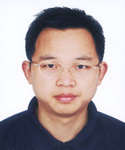| Biography | |
|---|---|
 Prof. Lijun Wang Xi’an Jiaotong University, China |
|
| Title: Arcing and electrode erosion behavior in vacuum interrupters | |
| Abstract:
Vacuum interrupters are widely used in AC and DC circuit breakers, and also pulsed power fields. Understanding of vacuum arc mechanism is very useful for the design of vacuum interrupters. Modeling and numerical simulation is an important tool for the research of the physical mechanisms of the vacuum arc. Compared with the experiments of the vacuum arc, numerical simulation is more efficient and economical. Axial magnetic fields (AMFs) also are the most popular control technology in vacuum interrupters and other application fields. Firstly, the model of vacuum arc was reviewed from a relatively simple zero-order one to two-dimensional (2D) one, and then a three dimensional (3D) one, which gives us a more comprehensive understanding of vacuum arc. Secondly, The influence of spatial distribution of magnetic fields on vacuum arc behavior is also studied. Vacuum arc behavior under different commercial AMF contacts was simulated and compared based on 3D magneto-hydro-dynamic (MHD) model. Influence of the radial slots and magnetic field generated by adjacent phase and bus bar on arc characteristics has been reviewed. Thirdly, the vacuum arc modeling with active anode is reviewed and discussed. Anode vapor can cool arc plasma, and leads to changed distribution of current density and plasma parameters. Model and simulation technology of anode activity and cathode spot also have been reviewed in this paper, from 1D, 2D to 3D, and then the deformation of anode melting pool is considered. Deformation of anode melting pool will make anode temperature more reasonable. Finally, the challenge and research direction of vacuum arc modeling is also given and discussed.
| |
| Biography:
Lijun Wang received Ph.D. degrees in electrical engineering of Xi’an Jiaotong University in 2006. He is currently a professor in Department of Electrical Engineering, also State Key Laboratory of Electrical Insulation and Power Equipment, Xi’an Jiaotong University. From 1997 to 1999, he worked with Xi’an High-Voltage Apparatus Research Institute and was engaged in R&D of vacuum interrupter and circuit breaker. From 2009 to 2010, he is a research scholar with Institutes of Research of Electronics and Applied Physics in University of Maryland, College Park. He is engaged in research of modeling and simulation of vacuum arcs and discharge plasmas, partial discharge detection and temperature rise simulation of electrical switch-gears, vacuum dc breaking technology, and atmospheric-pressure plasma processing. He has published more than 200 papers, more than 100 papers has been published in Applied Physics Letters, IEEE Transactions on Plasma Science, Journal of Physics D: Applied Physics, Journal of Applied Physics,IEEE Transactions on Components, Packaging and Manufacturing Technology, IEEE Transactions on Power Delivery, Physics of Plasmas, and other Journals.
| |
